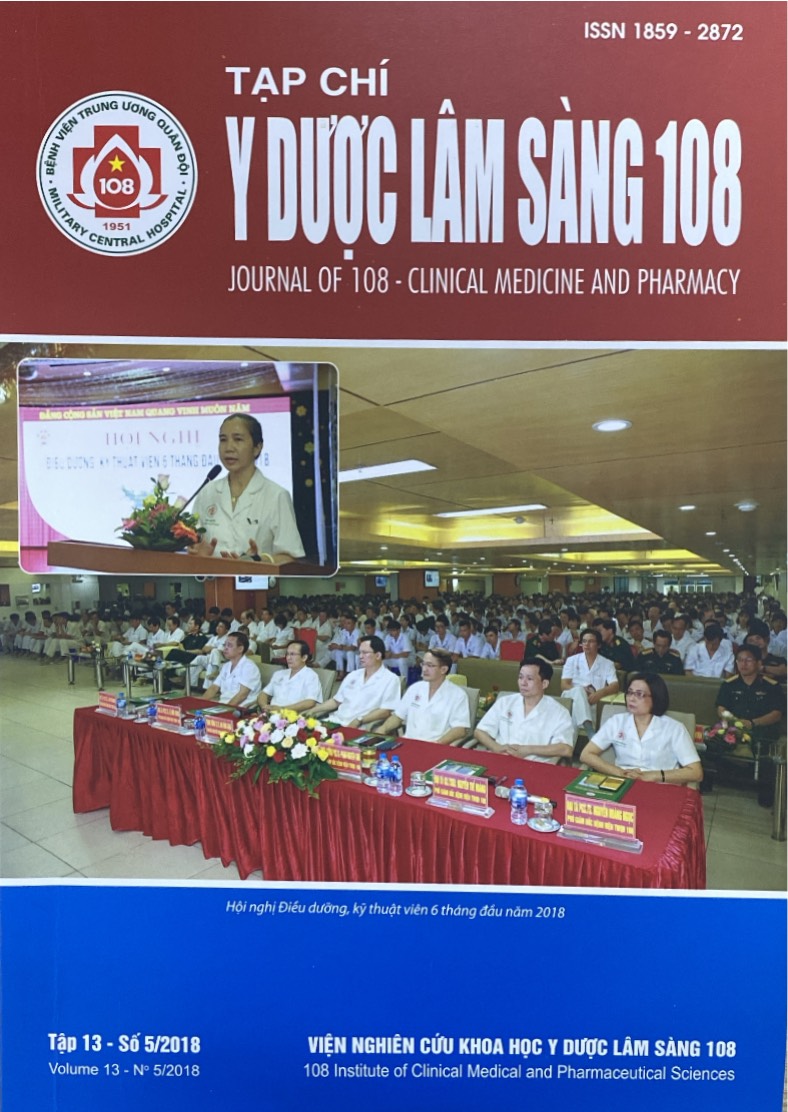Comparison the side effects of levobupivacaine - fentanyl versus bupivacaine - fentanyl in pediatric patients undergoing caudal blockage for umbilical surgery
Main Article Content
Keywords
Abstract
Objective: To compare the side effects of levobupivacaine-fentanyl versus bupivacaine-fentanyl in pediatric patients undergoing umbilical surgery with caudal blockade. Subject and method: A randomized, controlled trial of 70 patients undergoing umbilical surgery by caudal blockage and laryngeal mask anesthesia, divided into two groups: Group I using levobupivacaine 2mg/kg + fentanyl 1μg/kg; group II used bupivacaine 2mg/kg + fentanyl 1μg/kg for caudal blockage. Result: There was no difference in heart rate, respiratory rate, arterial blood pressure, SpO2 during and after surgery. No case had respiratory frequency, heart rate, arterial blood pressure decrease < 20% base in 2 groups. Side effects were: Nausea, vomiting (group I: 5.7%, group II: 8%); Itching (group I: 5.7%, group II: 2.85%); chills (group I: 5.7%, group II: 5.7%), urinary retention (group I: 2.85%, group II: 2.85%). There was no case of postoperative respiratory depression after surgery. The level and duration of motor block recovery in the two groups was not statistically significant (p>0.05). Conclusion: Side effects of caudal blockade of levobupivacaine-fentanyl in pediatric patients undergoing umbilical surgery was similar that of bupivacaine - fentanyl.
Article Details
References
2. Dalens B, Hasnaoui A (1989) Caudal anesthesia in pediatric surgery: Success rate and adverse effects in 750 consecutive patients. Anesth Analg 68: 83-89.
3. Elham M El-Feky, Ahmed A Abd El Aziz (2015) Fentanyl, dexmedetomidine, dexamethasone as adjuvant to local anesthetics in caudal analgesia in pediatrics: A comparative study. Egyptian Journal of Anaesthesia 31: 175-180.
4. Ivani G, De Negri P, Lonnqvist P et al (2003) A comparison of three different concentrations of Levobupivacaine for caudal block in children. Anesth Analg 97: 368-371.
5. Locatelli B, Ingelmo P, Sonzogni V (2004) Randomized, double - blind, phase III, controlled trial comparing levobupivacaine 0.25%, ropivacaine 0.25% and bupivacaine 0.25% by the caudal route in children. British Journal of Anaesthesia 94(3): 366-371.
6. Wolf AR et al (1989) Combined bupivacaine/morphine caudal: Duration of analgesia and plasma morphine concentration. Anesthesiology 71(3A): 1015-1017
 ISSN: 1859 - 2872
ISSN: 1859 - 2872
